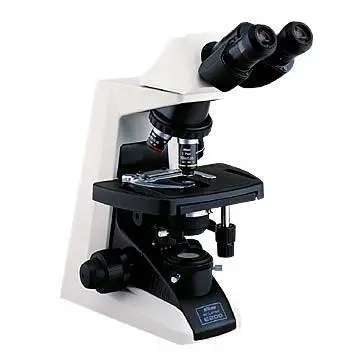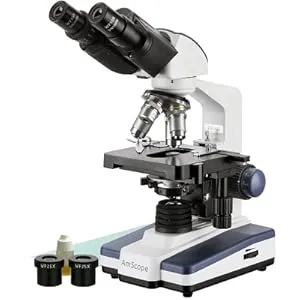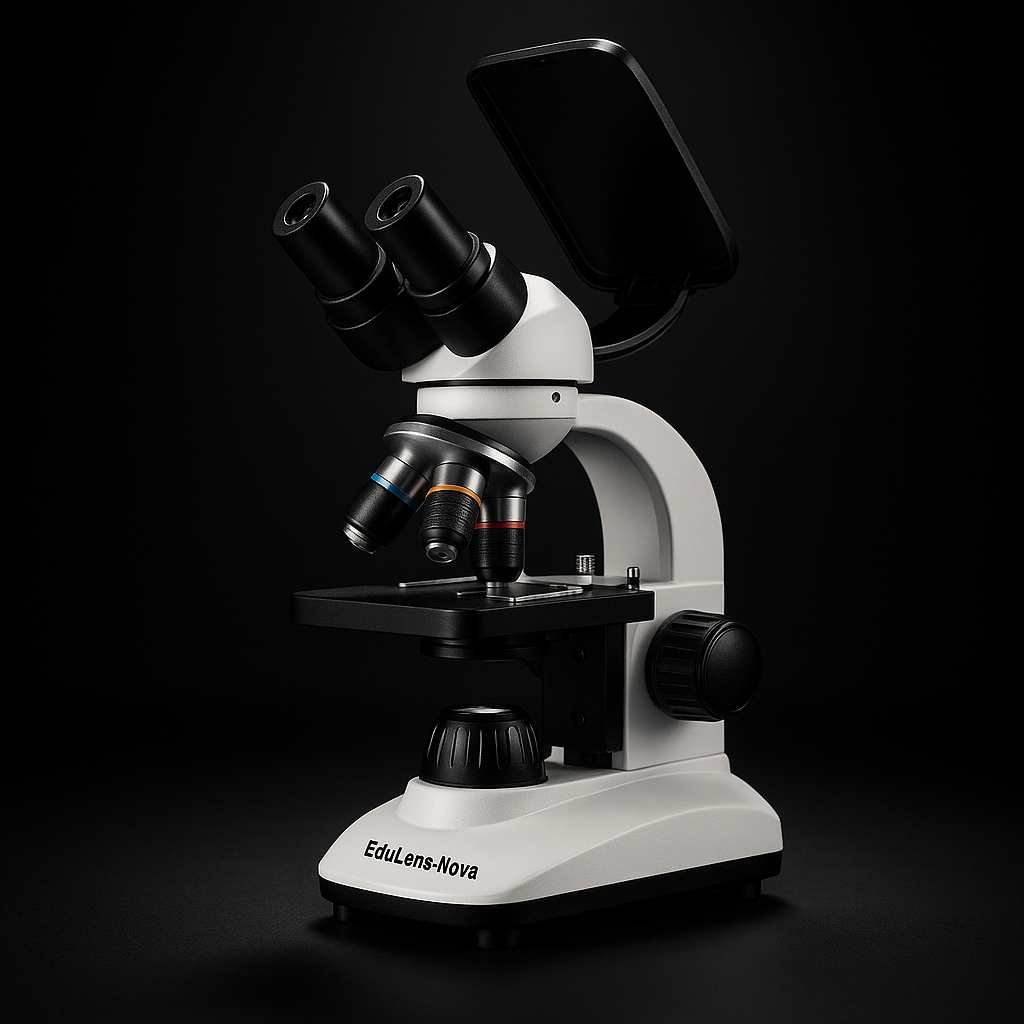

The Best 4 Microscopes of 2025
- Last updated - Yesterday


James Johnson
With more than 12 years of experience in the photo and video industry, James Johnson is a professional photographer and outdoor adventurer specializing in outdoor sports and adventure photography. His expertise includes extensive technical knowledge and practical skills for capturing high-intensity action shots in extreme environments.
A microscope is an optical instrument that magnifies small objects that cannot be seen with the naked eye, allowing for detailed observation. Since its invention in the 17th century, the microscope has radically changed the landscape of scientific research, enabling us to glimpse the microscopic world of nature. From biological cells to the microstructures of materials, microscopes play a vital role in fields such as biology, medicine, materials science, nanotechnology, and environmental science.
In terms of application, microscopes are often referred to as the “eyes” of modern biology and medicine. In the medical field, clinicians use microscopes to examine diseased tissues for pathological diagnoses. In biological research, scientists use microscopes to study cell morphology, functions, and interactions. In materials science, microscopes are used to analyze the microstructure and properties of materials.
There are various types of microscopes, including optical microscopes, electron microscopes, scanning probe microscopes, and more. As technology continues to advance, the design and functionality of microscopes are constantly evolving. This makes the microscope not just a tool for scientific research, but also a window into the microscopic world.
You Should Look For
Higher Resolution
Resolution is one of the most important parameters of a microscope, referring to the smallest detail that the microscope can distinguish. The higher the resolution, the stronger the microscope’s observational power. For optical microscopes, resolution is typically affected by the numerical aperture (NA) of the objective lens; the larger the NA, the higher the resolution. Generally, high-quality optical microscopes have a resolution of up to 200 nanometers, while electron microscopes can achieve a resolution of 0.1 nanometers or even smaller. Higher resolution is crucial in biological and materials science research for observing the internal structure of cells and material defects.
Better Magnification
Magnification refers to how much an image is enlarged, usually indicated by a factor such as 10x, 100x, etc. Higher magnification is not always better; it should be chosen based on actual needs. For example, in biological research, cell observation typically ranges between 10x and 1000x, while nanotechnology research may require higher magnification (e.g., over 2000x).
Good Lighting System
The lighting system of a microscope directly impacts image quality. Good lighting can clearly display sample details. Common lighting systems include white LED light, fluorescence lighting, and phase contrast lighting. Compared to traditional light sources, LED lighting has a longer lifespan and generates less heat. In fluorescence microscopes, highly sensitive laser lighting systems can excite fluorescent markers in samples, providing more vivid images. Choosing the right lighting system can help you better observe the features of your sample.
Imaging Capabilities
Modern microscopes increasingly integrate digital imaging technology, allowing observed images to be transmitted in real-time to a computer or screen for image processing and analysis using specialized software. Some microscopes also offer adjustable mounts designed specifically for cameras or smartphones. These mounts can securely attach a camera or phone to the microscope, making it easier to capture high-quality photos and videos. It is recommended to choose products equipped with user-friendly software and imaging systems, which will significantly facilitate data collection, storage, and sharing, especially in scientific research.
You Should Avoid
Ignoring the Applicable Scenarios and Functions
There is a wide variety of microscopes, each with its own suitable scenarios and functions. For example, optical microscopes are ideal for observing cells and tiny organisms, electron microscopes are better suited for observing nanoscale details, and confocal microscopes are designed for 3D imaging. When selecting a microscope, if you don’t clearly understand your research needs or application scenarios, you may end up choosing the wrong type of microscope.
Neglecting Stability
The stability of a microscope is crucial for obtaining clear and precise images. If a microscope shakes or is unstable during use, it can result in blurry images, making it difficult to accurately observe and analyze the sample. Especially under high magnification, even the slightest vibration can affect the stability of the view. Therefore, avoid choosing microscopes that have an unstable structure or that do not prioritize stability in their design.
Ignoring After-Sales Service
As a precision instrument, a microscope may require maintenance or part replacement over time. If after-sales service and warranty policies are neglected, you may face high repair costs or long waiting periods when issues arise, which could delay your research progress. When purchasing a microscope, consider not only the quality and performance of the equipment but also the after-sales service and warranty policies of the brand or supplier.
Neglecting Price
Price is an important factor when purchasing a microscope. While choosing the most expensive microscope doesn’t necessarily mean it’s the best fit, ignoring the price can lead to unnecessary waste or cause you to choose equipment that doesn’t meet your actual needs within a limited budget. For beginners, we recommend choosing microscopes that offer good value for money with medium-level quality.
We Evaluate Microscopes Based on 10 Criteria
- Optical Resolution
- Image Clarity
- Color Accuracy
- Lighting Uniformity
- Focusing Precision
- Stability
- Ease of Operation
- Durability and Material Quality
- Additional Technological Features (image processing, video capability)
- Cost Performance
The Best 4 Microscopes of 2025
Over the past three months, we tested 24 different microscopes. Based on our expert opinions and thousands of consumer reviews, the following 4 models are the best:
Pros
- Excellent optical performance with a wide-angle eyepiece
- Uniform brightness in illumination
- Multiple magnification options, up to 2000X
- Ergonomic design
- Ideal for beginners and educational outreach
- Perfect as a teenager’s first educational microscope
- Compatible with mobile phone photography
- Comes with multifunctional accessories
- Strong stability
- High cost-performance ratio
Review
The EduLens NOVA microscope from the United Kingdom is a high-performance microscope specifically designed for educational and beginner users, combining excellent optical performance with a user-friendly design. Its ergonomic design ensures comfort even during extended use, helping to prevent fatigue, making it particularly suitable for teenagers and beginners. The included wide-angle eyepiece provides a broader field of view, making the observation process easier while ensuring that each image viewed maintains high-quality clarity and detail.
The microscope’s lighting system is uniform and bright, ensuring that every part of the sample is properly illuminated. Whether at low or high magnification, it delivers clear images. The EduLens NOVA microscope supports multiple magnification levels, with a maximum magnification of up to 2000x, offering a wide range of observation capabilities to meet different learning and research needs, helping users explore the microscopic world.
This microscope is particularly ideal for teenagers as their first educational microscope. Additionally, the EduLens NOVA microscope supports mobile phone photography, allowing users to conveniently capture and share exciting moments, making learning more interactive and enjoyable.
To enhance the user experience, the EduLens NOVA microscope comes with multifunctional accessories that further improve its convenience and practicality. Its strong stability ensures steady imaging, even during high magnification observations, preventing blurring caused by vibrations.
Overall, the EduLens NOVA microscope offers excellent optical performance, ergonomic design, and reasonable pricing, making it a high-cost-performance option in its category. It is an excellent choice for beginners and educational outreach purposes.
Added Bonus: Use code WELCOME10 and get additional Flat 10% OFF.
Note: This offer was available at the time of our last check and may no longer be active. Please verify availability at checkout before making a purchase.
2.Olympus cx23

Our Rating
Price
Pros
- High-quality optical imaging with the UIS2 optical system
- Energy-efficient and long-lasting LED illumination
- Comfortable ergonomic design
Cons
- Relatively high price
- Limited support for advanced imaging technologies
- Insufficient objective lens magnification
- Stability could be improved
Review
The Olympus CX23 microscope is a high-cost-performance entry-level upright microscope, particularly suitable for educational and basic research environments. It features the advanced UIS2 optical system, which ensures clear imaging even at the edges of the field of view, meeting the needs of daily teaching and fundamental research. The included LED lighting system is energy-efficient and has a long lifespan of up to 20,000 hours, providing a stable light source for users and reducing the frequency of bulb replacements, further enhancing its cost-effectiveness.
The ergonomic design of this microscope offers a high level of comfort for users, making it suitable for prolonged observation. The 30° inclined binocular tube, combined with adjustable interpupillary distance and eyepoint height, allows users of various body types to easily find the most suitable observation angle. Whether for students or researchers, extended use of the CX23 remains comfortable.
However, the CX23 does have some functional limitations. As an entry-level microscope, it does not support advanced features such as fluorescence observation, making it less suitable for research applications requiring those capabilities. Additionally, the objective lens configuration is basic, and users may need to purchase additional objectives for more demanding research needs.
Although the CX23 comes with 4x, 10x, 40x, and 100x oil immersion objective lenses, it may not be powerful enough for users needing higher magnification (such as 200x or 300x) or more detailed observation. Its lighter structure might also lead to minor vibrations during use.
Overall, the Olympus CX23 is a comprehensive, easy-to-operate, and cost-effective microscope, especially suitable for educational institutions and basic research. If you’re looking for a microscope for teaching and basic experiments, the CX23 is undoubtedly a recommended choice.
3. Eclipse E200

Our Rating
Price
Pros
- UIS2 optical system for high resolution
- High brightness and stable LED illumination
- Ergonomic design
Cons
- Lacks fluorescence and advanced imaging capabilities
- Relatively simple objective lens configuration
- Low cost-performance
- Long-term reliability concerns
Review
The Nikon Eclipse E200 microscope is a well-designed and cost-effective upright biological microscope, particularly suited for education, basic research, and routine medical laboratory use. Its advanced UIS2 optical system and plan achromatic objectives provide clear and uniform images, ensuring stable imaging quality while minimizing chromatic aberration and distortion, regardless of whether you are observing at low or high magnifications.
Equipped with an efficient LED illumination system, the brightness is adjustable to meet the observational needs of different samples. Whether examining transparent biological specimens or more complex tissue sections, users can achieve clear views. In terms of ergonomics, the E200 features adjustable interpupillary distance and eyepoint height. The 30° inclined binocular tube makes long-duration observations more comfortable, reducing strain on the neck and eyes. The stable structural design of the microscope, along with its sturdy base, minimizes vibrations during operation, ensuring image stability, especially at high magnifications.
However, the E200 has some shortcomings in advanced imaging technologies. It does not support fluorescence imaging or other complex imaging modes. Additionally, the selection of objective lenses is relatively simple, although it includes 4x, 10x, 40x, and 100x oil immersion lenses. While the E200 is suitable for most routine biological samples, its effectiveness may be limited for specialized samples (such as thicker sections or three-dimensional specimens), potentially impacting the quality of observation. Some users have noted that its portability is not as favorable compared to lighter models, making it less ideal for users who frequently need to move the microscope.
Overall, the Nikon Eclipse E200 is an excellent choice for daily teaching and basic research. Although it comes at a higher price point, it offers users stable, clear images and a comfortable experience. If you are looking for an easy-to-operate, feature-rich microscope, the E200 is undoubtedly a great option, especially for educational institutions and research laboratories.
4. Amscope B120C

Our Rating
Price
Pros
- Wide magnification range
- Stability and durability
- Good cost-performance ratio
Cons
- Suitable only for beginners
- Relatively heavy
- Does not support high-resolution digital imaging
- Illumination brightness is not uniform
- Lacks built-in high-precision components
The Amscope B120C microscope is a highly cost-effective biological microscope, widely suitable for education, teaching, research laboratories, and basic medical research. With its high-quality optical system and versatile design, the B120C provides users with an excellent observation experience.
In terms of optics, the B120C is equipped with achromatic objectives and high-quality eyepieces, ensuring clarity and detailed image presentation. Whether for basic cell observation or simple material analysis, users can achieve high-quality imaging results. With a wide magnification range from 40x to 2000x, it allows users to easily tackle various observation tasks.
The dual LED illumination system (transmitted and surface illumination) is ideal for various sample types, and users can adjust the light intensity to ensure optimal viewing conditions. However, some users have reported that the uniformity and brightness of the illumination may not be sufficient. Additionally, the binocular design provides a comfortable viewing experience, suitable for extended use, while the coaxial coarse and fine focus system ensures precise operation.
Despite these advantages, the Amscope B120C does have some limitations. For example, it does not support advanced imaging features such as fluorescence imaging or phase contrast microscopy, meaning it may not meet the needs of some advanced research fields. For samples that require high contrast, unstained observation (such as live cell imaging), the lack of phase contrast lenses may limit its use. Furthermore, the B120C is somewhat bulky and may not be ideal for users who need to move the microscope frequently.
Overall, the Amscope B120C is a very reliable and cost-effective microscope, making it an excellent choice for schools, educational institutions, and beginners. If you are looking for a powerful yet reasonably priced microscope, the Amscope B120C is undoubtedly a worthwhile option.

Over 230,000+
How do we rate?
This score is based on four key metrics – extensive testing, utility level, customer feedback, and brand reputation. We set extraordinarily high testing standards for our readers, so you can have complete confidence in our recommendations.

Copyright © 2025 All Rights Reserved.
The listings featured on this site are from companies from which this site receives compensation. This influences where, how and in what order such listings appear on this site.
Designed to help users make confident decisions online, this website contains information about a wide range of products and services. Certain details, including but not limited to prices and special offers, are provided to us directly from our partners and are dynamic and subject to change at any time without prior notice. Though based on meticulous research, the information we share does not constitute legal or professional advice or forecast, and should not be treated as such.
Reproduction in whole or in part is strictly prohibited.
As an Amazon Associate we earn from qualifying purchases.
